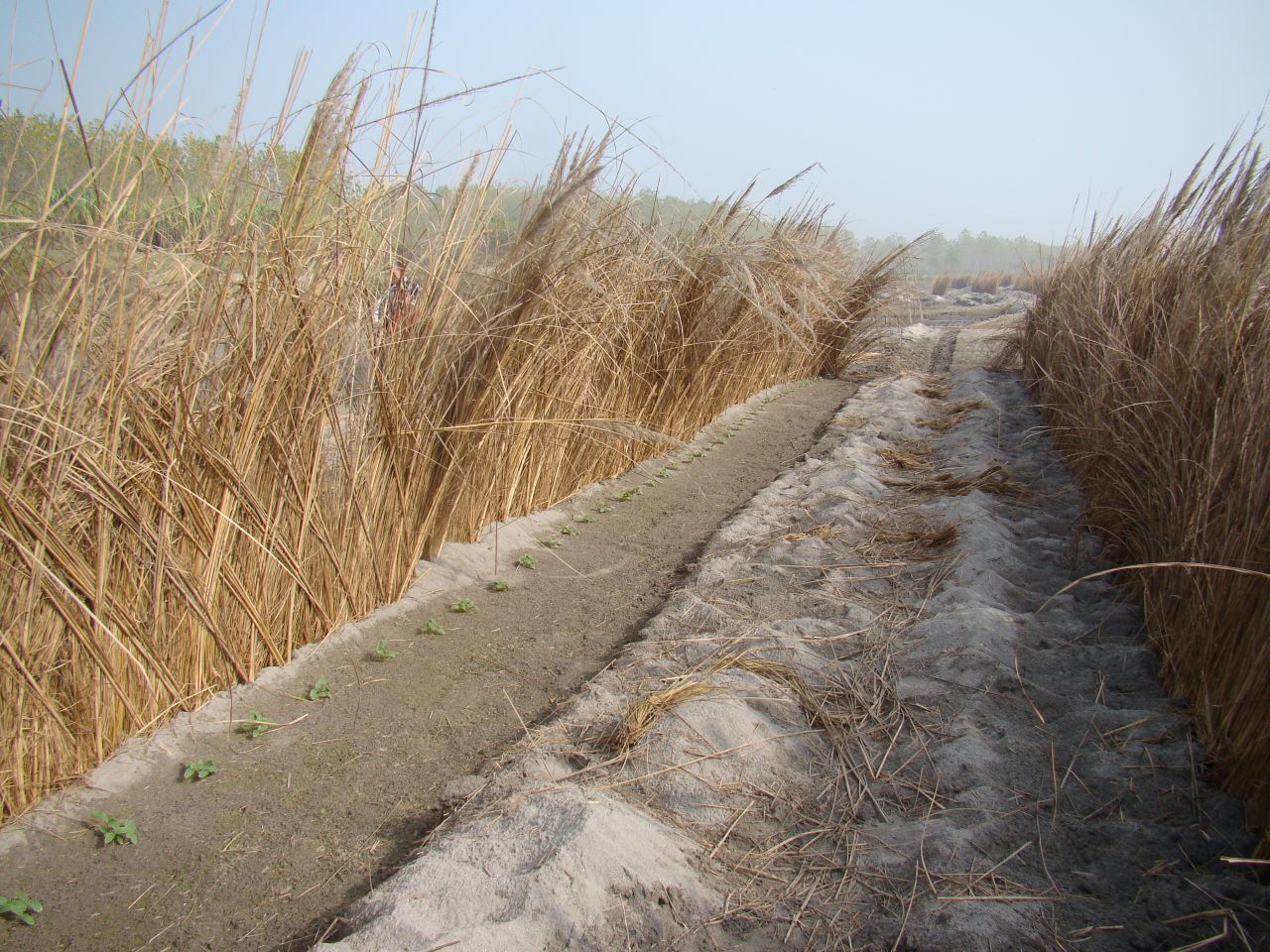Yield from the floodplains: A community of migrant seasonal farmers, the ‘Palaziye’ raise summer vegetables annually on river beds
The Palaziye walk the talk as they live close to the land and practise eco-friendly measures to grow seasonal vegetables on the river beds.


It is remarkable how Nature provides mathat are a perfect complement to the seasons. As summers approach and the bitter cold and sluggish months receded, there is warmth in the air, and the hint of spring and summers just round the corner. For that burst of freshness and cool nourishment and taste, the warm months see the markets bristling with fresh produce like kharbooja (musk melon), tarbooz (water melon), petha (ash gourd) and kakadi (cucumber). There are also the less popular but equally nourishing and tasty karela (bitter gourd), lauki (bottle ogurd), tori (ridge gourd) and kaddu (pumpkin).
While most of us welcome a sudden glut of tasty tarbooz and kharbooz our thoughts hardly ever go to where and by whom are these are grown in such large numbers? This is because traditional farmlands during summers are already occupied and ready for harvest of Rabi crops like wheat, pulses, barley etc.
It was the month of November 2011. We were back in Rana ji’s Kanalsi village where a workshop on natural farming for the members of Nadi Mitra Mandali (NMM) was underway. For the uninitiated, Kanalsi on the banks of Yamuna and Somb rivers is a village in the Yamunanagar district of Haryana. And Kiran Pal Rana heads the local NMM.
“Palaziye to hamare yehan har saal yehi kare hain” (This is what Palaziye practice here, each year) it was Rana ji responding to the explanation made by the workshop expert of the concept of ‘natural’ farming.
Rana ji offered to lead the group to their dwellings and farms when asked “Palaziye who”?
It was an extremely humbling education as well as a revelation. One had heard of ‘eco-system people’ with reference to tribal communities in far off lands but that such people could be so easily found just round the corner was a not-to-be-missed opportunity.
It turned out that a riverside plot was their home and floodplains the farms. ‘Palaziye’ is the name of a community of migrant seasonal farmers who more or less live off the land to raise cucurbits for our markets. “These are mohammedan people from as far away as Bareilly and Badaun in UP, largely landless but greatly skilled”, Rana ji was enthusiastically leading and enlightening the NMM group.

Try as hard as I could, I couldn’t succeed in tracing the origin of the term ‘Palaziye’ with some suggesting an English origin. Both the Oxford dictionary and Roget’s thesaurus were of no help. Nearest was Pepo which is botanically synonym of the genus Cucurbita.
Mud, sarkanda (Saccharum grass) stalks and thatch made the exterior of their homes while the interiors were decked up with colorful etchings by their ingenious womenfolk. Solar panels seemed to be their only allowance to modernity. Their chulha (oven) is a piece of art and a lesson in use efficiency both of time and fuel.

What beat everything else in their dera (dwelling complex) was their toilets. One would normally assume them to use the wide-open world for the needful. But no, each house had an extention made again of natural material but surprise surprise – an eco-san toilet? Nothing shamed us more to realise that while we as a group needed a three-day workshop to try and convince members of NMMs for raising such toilets, here were people who were already walking the talk … without need of any ‘expert’ advice?

Floodplain farming of Cucurbits is age old. Belonging to family Cucurbitacea these are popular vegetables (lauki, tori, kaddu etc.) and fruits (tarbooj and kharbooj) some of them strictly seasonal and others available round the year. They are reputedly amongst the earliest plants grown by man dated by paleo-botanical studies of sites in Mexico to be in excess of 10,000 years.
Using nothing more than farm yard manure and their own seed stock from previous years Palaziye, according to Rana ji had been utilizing the floodplains of the Yamuna since his forefather’s times.

Their technique perfected over the centuries is extremely light on the soil with hardly any ecological footprint to leave. Cucurbits require well drained soils and periodic watering. River floodplains provide both sandy soils and a high water table. They can’t tolerate frost or high winds and hence a curtain of grass stubbles along the furrows. Planting is carried out in the months of November and December once the river has flooded to its heart’s content and left behind fresh sand and silt. Harvesting begins April onwards.
Soils of different rivers and even sections in them are known to imbue characteristic flavor and taste in the produce. For example karnali (from Karnal in Haryana) tarbooj and kharbooj from Yamuna have been much sought after. Some other well known kharbooja land races include Bhagpat, Allahabad kajra, Jaunpuri and the Lucknow safeda from UP, Sanganer (Rajasthan), Hari dhari (Punjab) etc. (Ramjan et al. 2018)
Studies inform that farming in floodplains variously called Khadar, Kacchar, Char, Diara, Taal and Doab lands is a legitimate traditional post monsoon seasonal vocation and is reported from Punjab, Haryana, UP, Bihar, Bengal, Assam, Gujarat, Rajasthan, MP and parts of Maharastra and Andhra Pradesh.
It is extremely sad that over the last decade or so another economic activity in the riverbed and floodplains with a much greater and graver ecological footprint, carried out often illegally by practioners with a ‘devil may care’ attitude has infiltrated all over. It could not have been but at the Palaziye’s expense.
When recently contacted Rana ji bemoaned “Sand mafia ne Palaziyon ko bhaga diya hei ji” (the Palaziye have been chased away by the sand mafia) … Anyone listening!
Reference:
- Ramjan, V. Kumar, A. Chhetri. 2018. Production Technology of Cucurbits in Riverbeds. Indian Farmer 5(04):434- 438; April -2018
Photos: Manoj Misra

